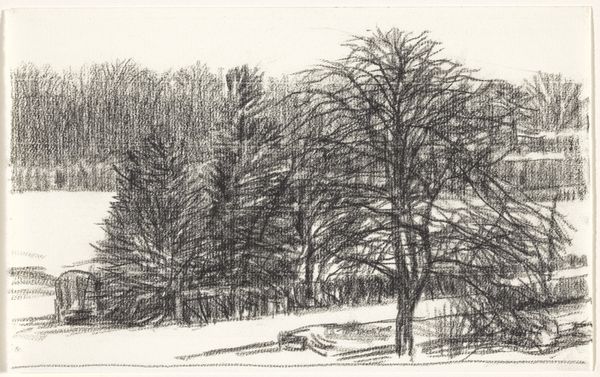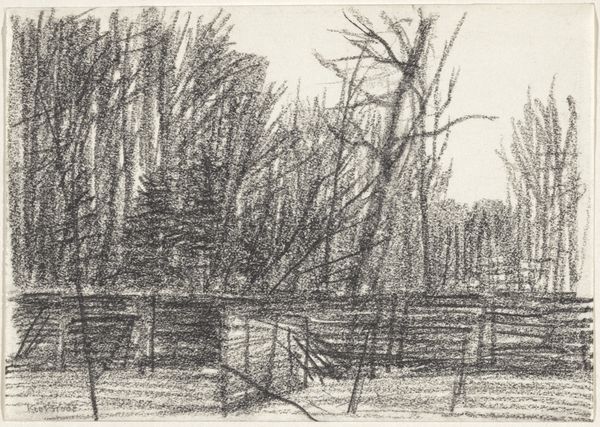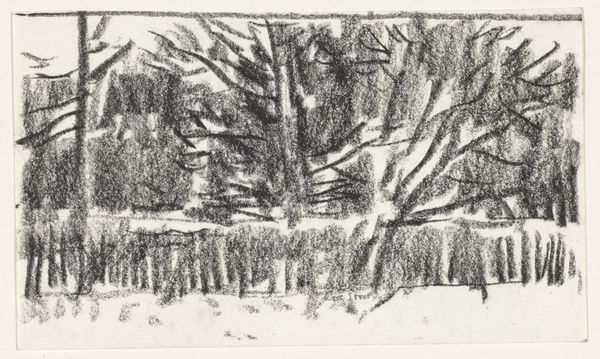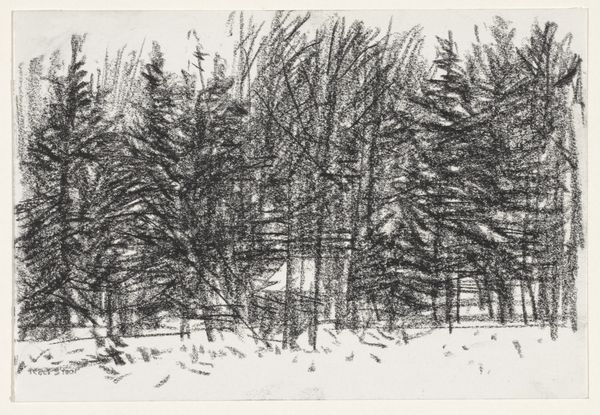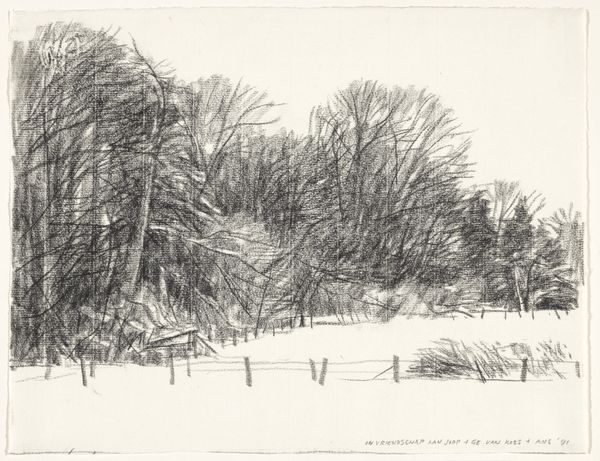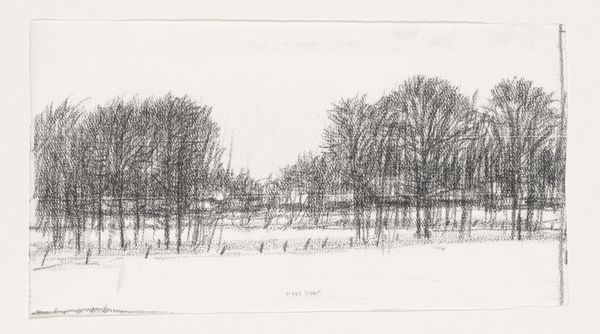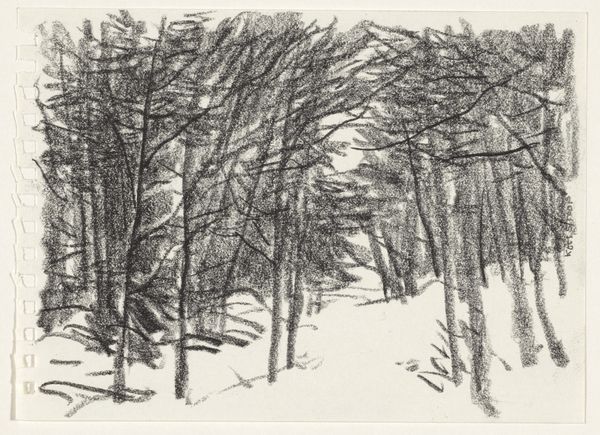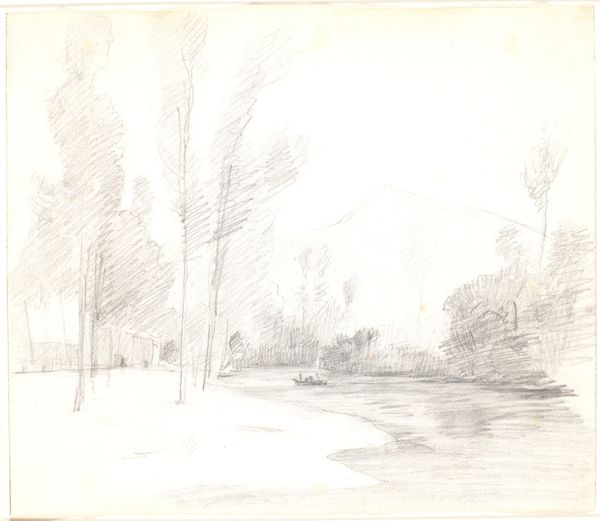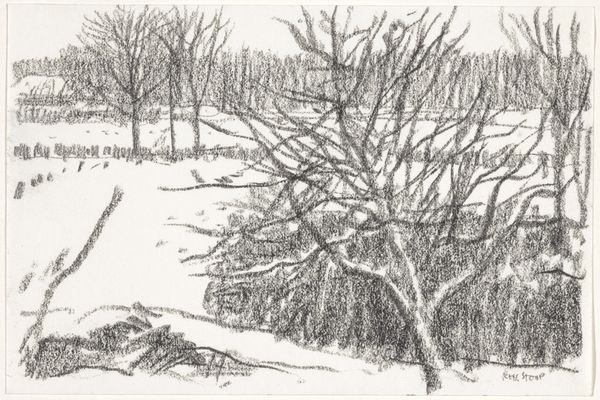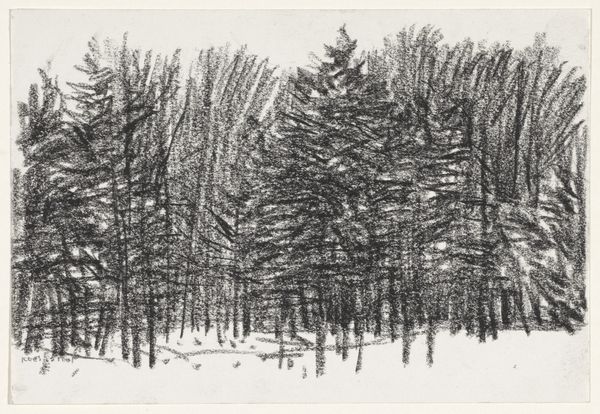
drawing, graphite, charcoal
#
drawing
#
landscape
#
graphite
#
charcoal
#
realism
Dimensions: height 190 mm, width 240 mm
Copyright: Rijks Museum: Open Domain
Editor: Here we have "Hek en bomen zonder blad" by Kees Stoop, created sometime between 1939 and 2009. It's a drawing made with graphite and charcoal. The mood is definitely somber and stark. What are your initial thoughts looking at it? Curator: Immediately, I think about the societal context during that timeframe. Considering the piece spans such a wide period, including World War II and its aftermath, the bare trees could represent loss, resilience, and the cyclical nature of life amidst disruption. Editor: That’s a compelling connection! The lack of leaves definitely speaks to a kind of barrenness. How does the artist’s technique contribute to this reading? Curator: The medium itself is interesting. Graphite and charcoal are both primal, raw materials. It's like a direct link to the earth, and they offer a tonal range perfectly suited to capturing bleakness. Notice how Stoop uses short, hurried strokes? It might suggest urgency, instability, reflecting the precariousness felt by so many. The realism also prompts viewers to reflect on their relationship to their surrounding landscape and how social or political actions affect their sense of place. Editor: So, seeing beyond just a landscape, you read social commentary into it through both material and technique? Curator: Precisely. We must consider whose landscape gets represented, by whom, and for what purpose. It's not merely an innocent scene of trees, it's a statement potentially imbued with the struggles and anxieties of an era. What do you make of that approach? Editor: I had only considered it as a representation of the bleakness of winter. Thinking about it in light of those potential historical disruptions, makes me appreciate the image in a much richer context. Thank you. Curator: And thank you for your observations; your sensitivity towards the starkness of the image opens up crucial pathways for discussion.
Comments
No comments
Be the first to comment and join the conversation on the ultimate creative platform.

